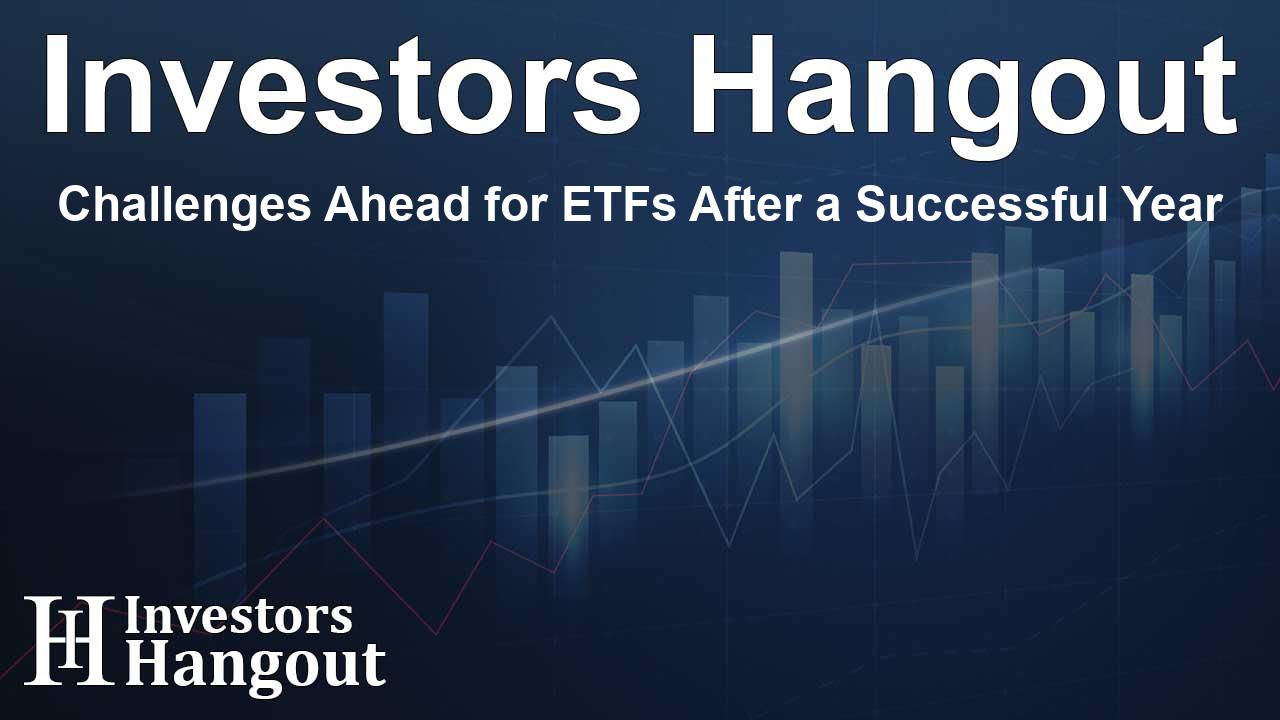ETFs Experience Record Growth Amid New Challenges
The world of exchange-traded funds (ETFs) has witnessed extraordinary growth lately, with U.S. ETFs achieving a staggering $1.1 trillion in inflows. This remarkable figure in 2024 marks a historic peak in the industry, nearly doubling the prior year’s impressive inflows of $597 billion.
Market Dynamics Influencing ETF Popularity
Multiple factors contribute to the surging popularity of ETFs. Investors are increasingly favoring these products for their lower costs, liquidity, and the burgeoning options and cryptocurrency-based offerings that diversify traditional investment strategies. In a burgeoning bull market, investors are becoming more adventurous, leading to a wider acceptance of higher-risk investment products.
Anticipating the Future: Potential Roadblocks
As the excitement around ETFs grows, so too do the concerns regarding the market's saturation and innovation pace. Industry analysts caution that while growth may continue, reaching new heights in 2025 could be complicated. Bryan Armour, an ETF analyst at Morningstar, notes that excessive product development might lead to investor fatigue concerning complex strategies. Not every new ETF will capture investor interest.
Impending Challenges for ETF Providers
Armour predicts that 2025 may witness the closure of numerous ETFs, potentially surpassing the record 253 funds shut down in 2023. 2024 already saw the closure of 186 funds, most with less than $250 million in assets. Such significant closures suggest that not every new ETF will be successful.
Adapting Strategies in a Rapidly Changing Market
With declining average lifespans for ETFs, firms are realizing the need to act swiftly when their products fail to gain traction. By 2024, the average lifespan of an ETF had dipped below five years. Experts like Matt Apkarian from Cerulli highlight that organizations must be proactive, reallocating resources to more promising products while efficiently closing those that do not perform.
Reasons for Optimism in the ETF Sector
Despite the challenges on the horizon, many industry experts maintain a positive outlook. The overall global ETF market has swelled impressively, rising from $11.6 trillion in late 2023 to an astonishing $14 trillion by the end of the year. Such growth reflects a healthy appetite for ETFs.
The Surge of New ETF Offerings
As new products flood the market, research shows that 714 new ETFs, including a variety of spot bitcoin products, were launched by the end of the year. This notable increase compared to 543 in 2023 and 480 in 2021 indicates a thriving industry looking to capitalize on growing investment trends.
Innovative Trends Shaping Future ETF Offerings
A significant trend contributing to the surge in ETFs is the growing interest in products that incorporate options to manage risk. Financial professionals are increasingly leveraging strategies that involve defining outcomes and managing potential risks while striving for returns. Brendan McCarthy, responsible for ETF distribution at Goldman Sachs, expresses excitement about entering this market with new buffered ETF products in the upcoming year.
The Impact of High-Performing ETFs
High-profile ETFs, like the GraniteShares 2x Long Nvidia ETF, which delivered a remarkable 177% return in 2024, serve as prime examples of the demand for performance-oriented investments. This specific product alone attracted over $3.5 billion in fresh investments, showcasing the market's potential.
Conclusion: Navigating the Future of ETFs
The ETF landscape is changing rapidly, filled with both opportunities and challenges. As financial professionals and investors step into 2025, the key will be remaining agile, aware of shifting trends, and prepared to adapt to the evolving financial market.
Frequently Asked Questions
What challenges are expected for ETFs in 2025?
Increased competition, declining average lifespans, and potential investor fatigue with complex strategies are among the primary concerns.
Why are ETFs becoming increasingly popular?
ETFs offer lower costs, liquidity, and a diverse range of innovative investment options that attract investors in a volatile market.
What is driving the increase in new ETF launches?
An upsurge in interest for investment products, particularly in options trading and cryptocurrency, is driving the launch of new ETFs.
How has the average lifespan of ETFs changed?
As of early 2024, the average lifespan of an ETF has fallen below five years, indicating the need for quicker decision-making by fund managers.
What high-performing ETFs should investors consider?
Investors can look at ETFs like the GraniteShares 2x Long Nvidia ETF, which had a 177% rise in value, attracting significant investments in 2024.
About Investors Hangout
Investors Hangout is a leading online stock forum for financial discussion and learning, offering a wide range of free tools and resources. It draws in traders of all levels, who exchange market knowledge, investigate trading tactics, and keep an eye on industry developments in real time. Featuring financial articles, stock message boards, quotes, charts, company profiles, and live news updates. Through cooperative learning and a wealth of informational resources, it helps users from novices creating their first portfolios to experts honing their techniques. Join Investors Hangout today: https://investorshangout.com/
Disclaimer: The content of this article is solely for general informational purposes only; it does not represent legal, financial, or investment advice. Investors Hangout does not offer financial advice; the author is not a licensed financial advisor. Consult a qualified advisor before making any financial or investment decisions based on this article. The author's interpretation of publicly available data shapes the opinions presented here; as a result, they should not be taken as advice to purchase, sell, or hold any securities mentioned or any other investments. The author does not guarantee the accuracy, completeness, or timeliness of any material, providing it "as is." Information and market conditions may change; past performance is not indicative of future outcomes. If any of the material offered here is inaccurate, please contact us for corrections.
